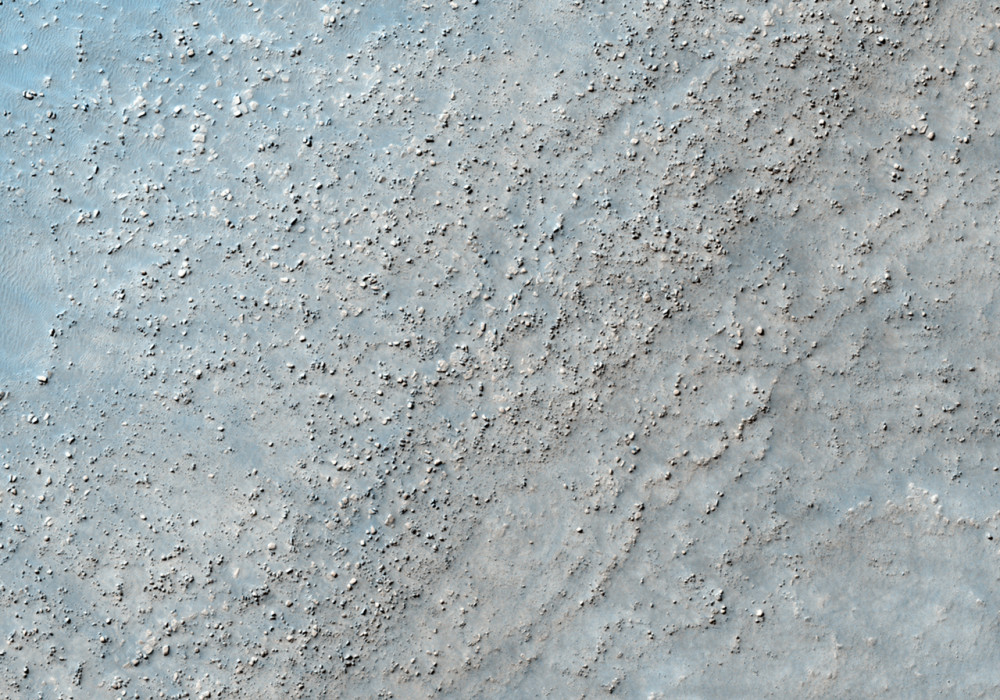Though a variety of origins have been proposed, this sinuous, layered, boulder-filled deposit in the southern Argyre Planitia is likely an esker. Eskers form in wet-based glaciers, when water flows inside or below the glaciers and deposits sediment. After the ice melts, the sediment is left behind as a ridge.
Because the material is deposited by flowing water, the sediment in eskers is sorted: larger rocks, pebbles, sand grains, etc. are deposited first, and smaller sediment, such as smaller pebbles, sand, or clay, are deposited further from the source and on top of the coarser material. Several factorsincluding the amount of sediment available, the speed and volume of the flowing water, and the slope over which it floweddetermine how much sediment is deposited and how large the dominant grain size is. There may be many of these sequences preserved within an esker.
Eskers look a little like inverted river beds. One relatively simple way to differentiate between the two is that inverted river beds record flow in a downhill direction along their entire length. Eskers, on the other hand, can record flow both down- and uphill. This is possible because water flowing through the ice tunnels in glaciers is under pressure, just like water in a hose.
This particular esker is part of a branching and braided network of ridges in the southern Argyre basin. The boulders are on the order of 1-3 meters (about 3-10 feet) in diameter.
Written by: Andrea Philippoff (16 September 2009)
More info and image formats at http://hirise.lpl.arizona.edu/ESP_014272_1245
Image: NASA/JPL/University of Arizona
